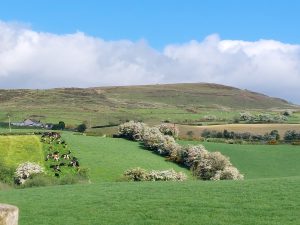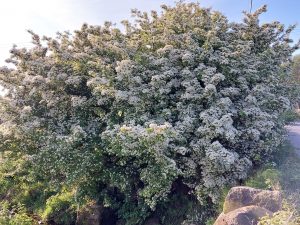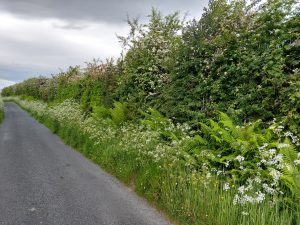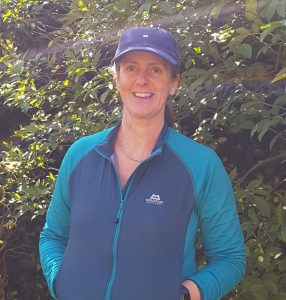It’s a perfect time of the year to celebrate our native hedgerows, as the early flowering Willow and Blackthorn fade, we are now being treated to an abundance of Hawthorn blossom. It’s a sure sign that spring is turning into summer.
On farmland, hedgerows are vital to the survival of pollinators. Good hedgerows can provide food (flowers) from spring right through to autumn, shelter for nesting and overwintering, and act as corridors that help pollinators move through the landscape.

How do hedgerows benefit farmers?
There are many benefits to have good farm hedgerows, here’s just a few:
- Shelter and shade for livestock
- Help to act as a physical barrier between livestock, which can decrease the spread of animal-to-animal contact
- Support our pollinators and important habitat for many wildlife species
- Provide habitat for beneficial insects that help with natural pest control
- Reduce flood damage, acting as a drainage system, helping to soak up excess water and slowing down run off on the land, contributing to carbon sequestration
- Reduce soil erosion and run-off pollution
- Woody hedgerow soils are less compact than adjacent fields and earthworm diversity is greater in pasture and margin soils, followed by hedgerows.
- Hedgerow soils have a distinct community of mycorrhizal fungi, which can give increased resistance to pathogens, tolerance to drought and ability to transfer nutrients.
Native hedgerows, managed in a pollinator friendly manner, have huge potential to help in the present biodiversity and climate emergencies. They really are a valuable resource to have on your farm.

What makes a hedgerow good for pollinators and biodiversity?
If you retain, manage and restore your existing native hedgerows, it’s the top action for pollinators and biodiversity on your farm. Here’s what makes a good hedge:
- Thick and tall, this will vary depending on its state of management
- Foliage to the ground
- Will be continuous, without gaps
- Ideally dotted by hedgerow trees
- Good range of native species (Hawthorn, Blackthorn, Willow, Hazel, Holly, Elder, Guelder rose, Wild Cherry, Rowan, Spindle)
- Ideally, margins on both sides uncultivated

When hedgerow management goes wrong
It’s important that we get the management of hedgerows right, or this valuable resource, unfortunately, can simply fade away.
As a farmer you know each field and their surrounding hedgerows and boundaries well and know that each hedge is different. You’ll also know when they were last cut and no doubt have a plan in your head for when they’ll be maintained again.
It’s a relatively recent problem, that we got into the annual trimming of every hedge each year. This has happened for a few reasons, but the most common reason is to make the hedges ‘neat and tidy’ and has become more important than maintaining a diverse habitat which will support pollinators and biodiversity.
Hawthorn blossom is produced on last year’s growth, if hedgerows are flailed each year there will be no blossom. No blossom means no pollen, no nectar, nothing for the pollinators and other insects, no berries for the birds to feed on and prepare for winter.
This over management of our hedgerows being trimmed so hard that there is little vegetation, or they are thin and spindly, gives little refuge for pollinators and biodiversity to feed, nest and hide from predators.
What to do if you want to have good native hedgerows on your farm
Maintain hedges in a sympathetic manner, that means trimming them every 3 to 4 years to allow hedges to mature and create habitats and wildlife corridors to link farms, woodlands, wetlands, meadows, and pastures together. Hedges will become corridors connecting farm to farm and with wildlife-to-wildlife site. These need to be linked together.
To find our more about hedgerow management go to our https://pollinators.ie/wordpress/wp-content/uploads/2018/04/How-to-guide-Hedgerows-2018-WEB.pdf
Visit the All-Ireland Pollinator Plan https://pollinators.ie/farmland/ where we have a page dedicated to farmland information and resources that can help you take the next steps, to carry out actions for pollinators on your farm.
You can participate in the National Biodiversity Data Centre’s Festival of Farmland Biodiversity https://biodiversityireland.ie/festival-of-farmland-biodiversity/ which takes place during the month of May.
By Ruth Wilson, Farmland Pollinator Officer, All-Ireland Pollinator Plan

